I’ve been crook this week and am still feeling very, very ordinary but I had an idea for this week’s post that could relate to our new year resolutions.

Although it looks as though this adult Hooded Plover was standing still you can see from the splash of bubbles that it was on the move. This is one of the hoodies from Phillip Island.
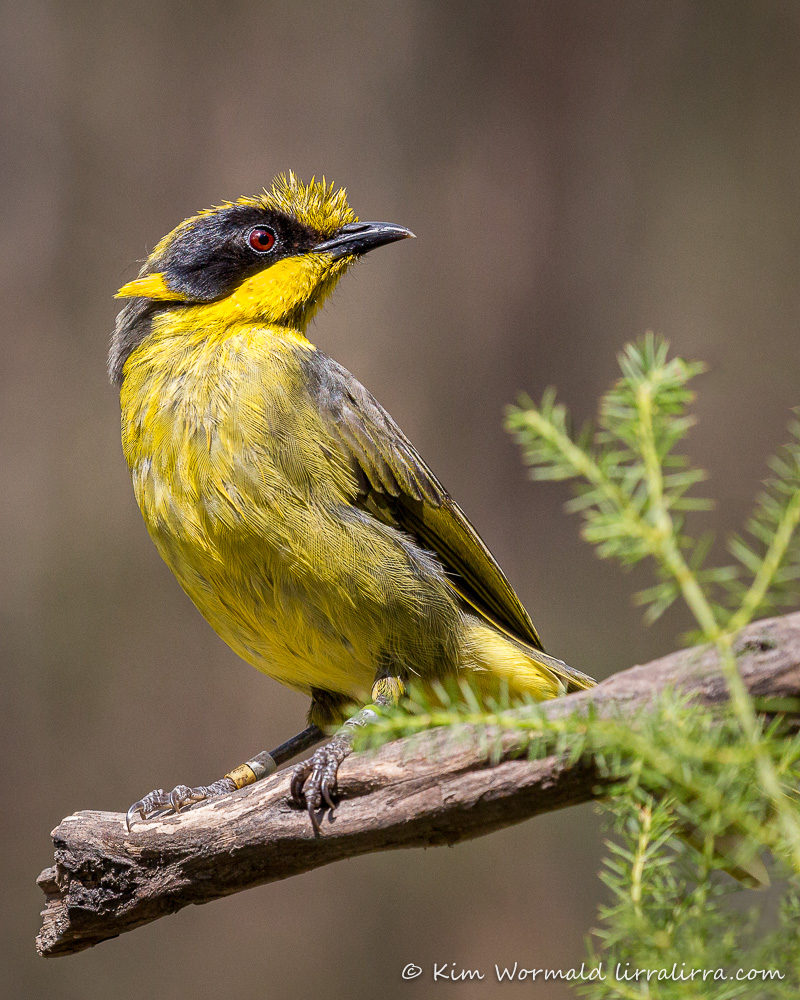
This shot clearly shows why the Helmeted Honeyeater got its name. This is one of the wild birds that is part of the amazing recovery program at Yellingbo in Victoria.
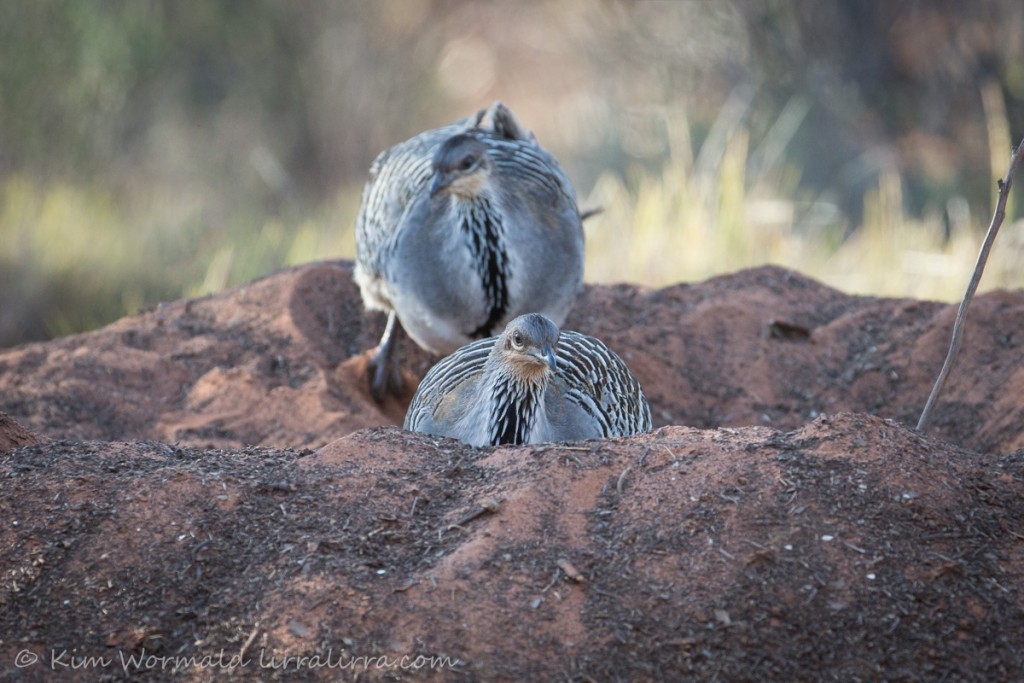
I was totally thrilled to see the female Malleefowl turn up at the mound to lay an egg as I was tucked away beneath my fabric hide at Scotia.
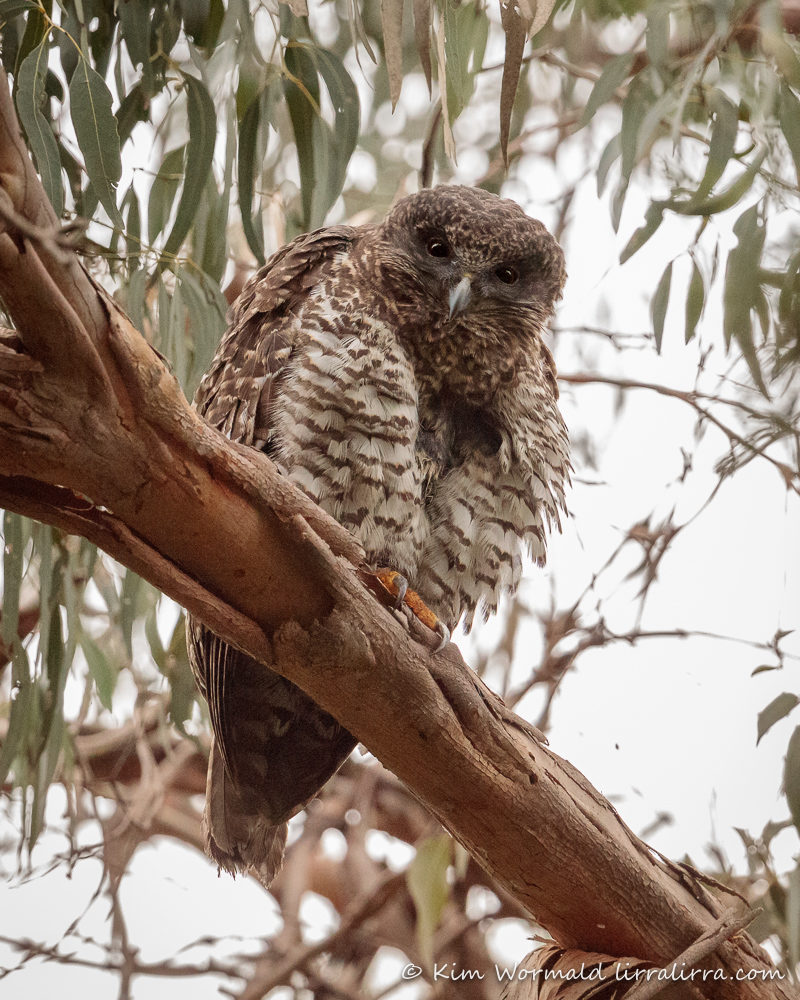
I had goosebumps when I was looking at this Powerful Owl, and they recur as I look at the photograph. A truly magnificent species.
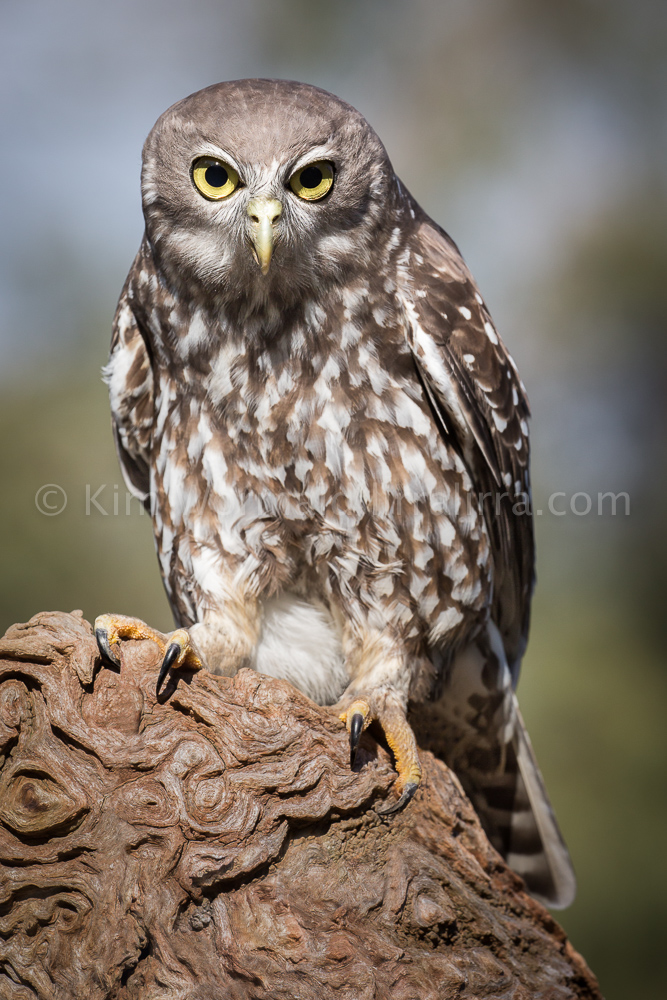
Another magnificent owl species. Years ago I heard the distinctive barking call of this bird at my property. Years later I heard it again only to learn that an ecologist was playing the call from a nearby forest!

I always feel strangely blessed to see Brolga, but to see this family at the Western Treatment Plant was especially lovely.
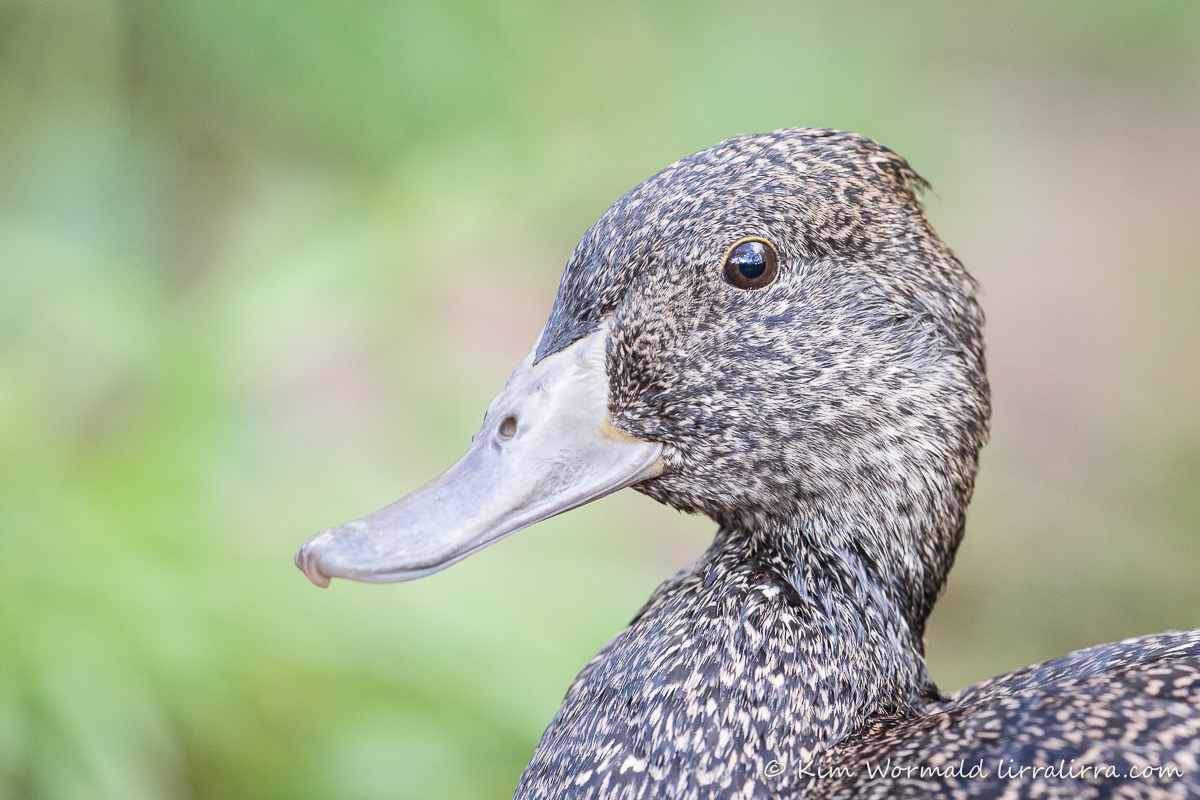
This exquisite species suffers horrendously during Victoria’s duck shooting seasons. It was a rare pleasure to photograph a living Freckled Duck.

Blue-billed Ducks are variously listed as endangered or vulnerable. No prizes for guessing how they got their name!
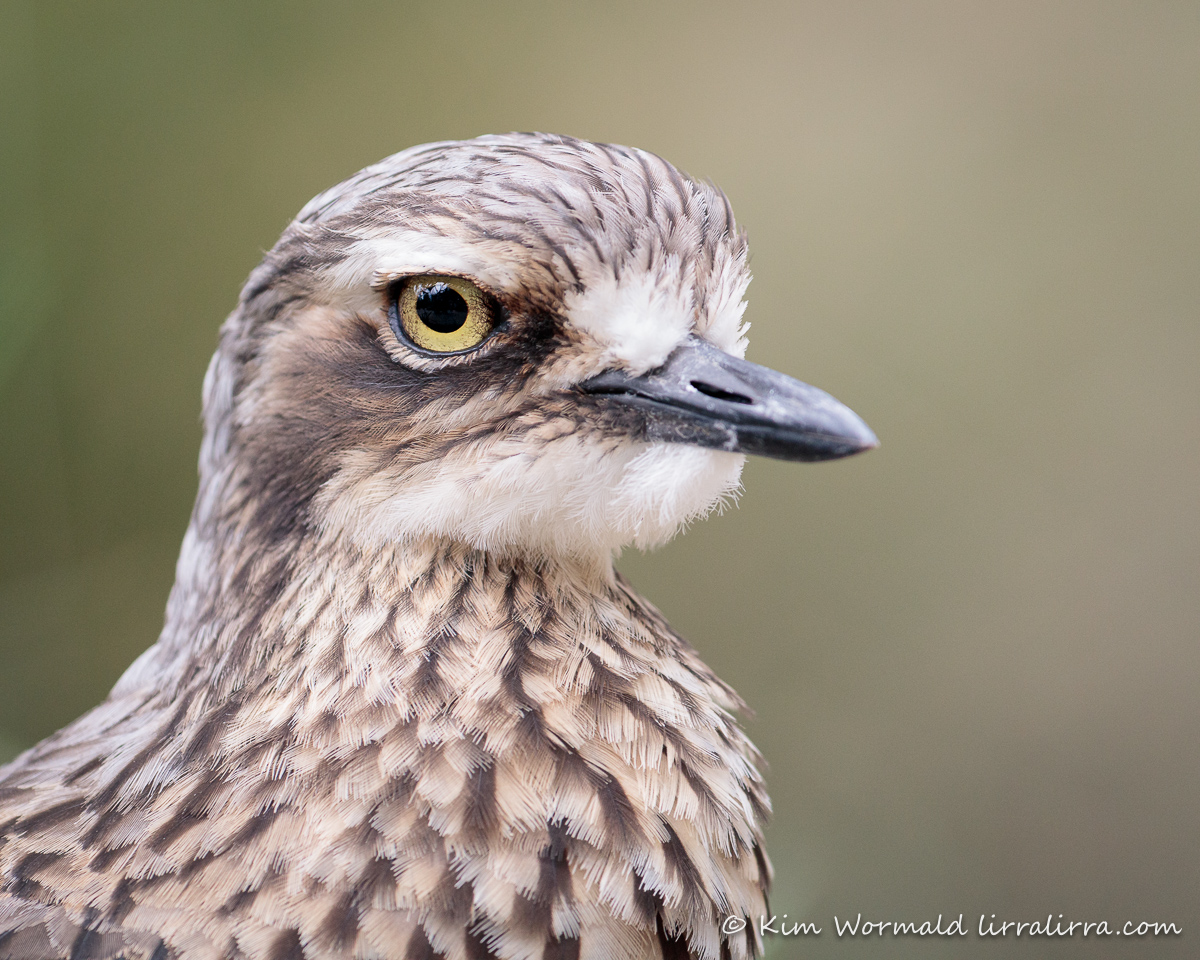
This remarkable species is endangered in Victoria and NSW. I have photographed them in the wild in Queensland, and a shot I took was used on the cover of a young adult novel.
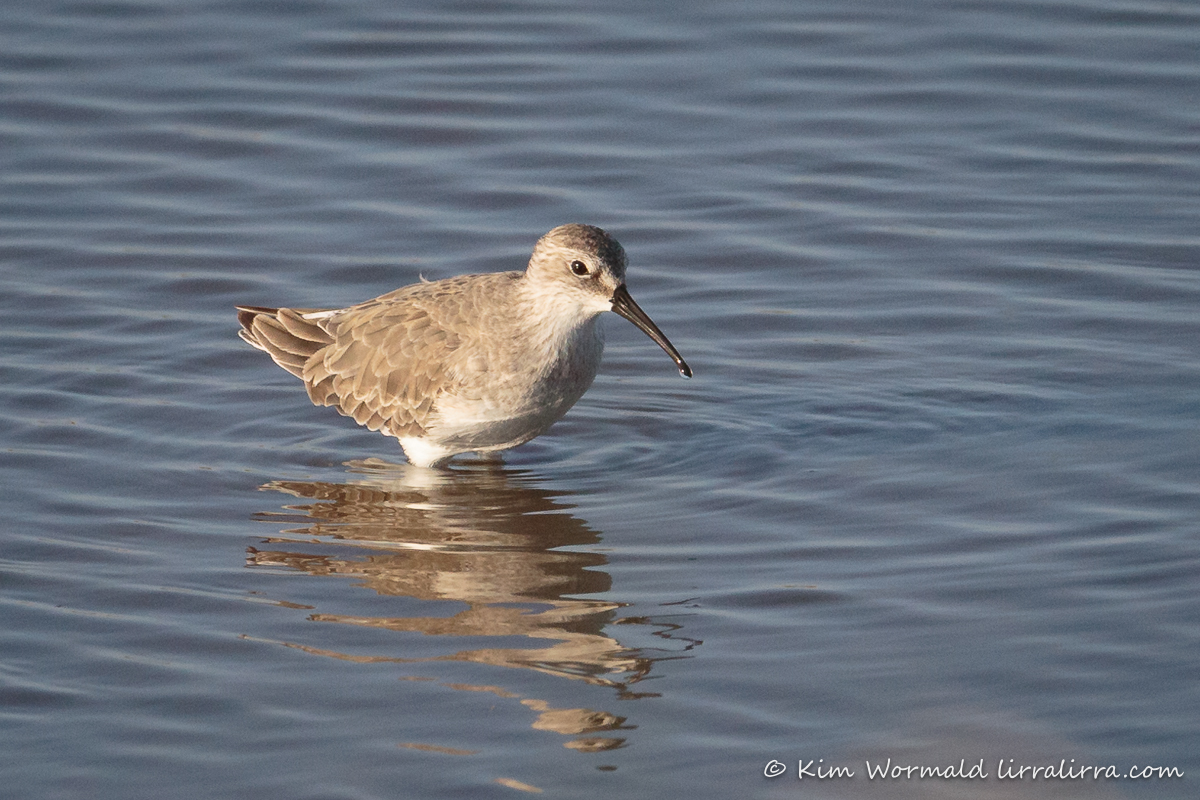
Once common, now in trouble along with the Eastern Curlew, Great Knot and many others.
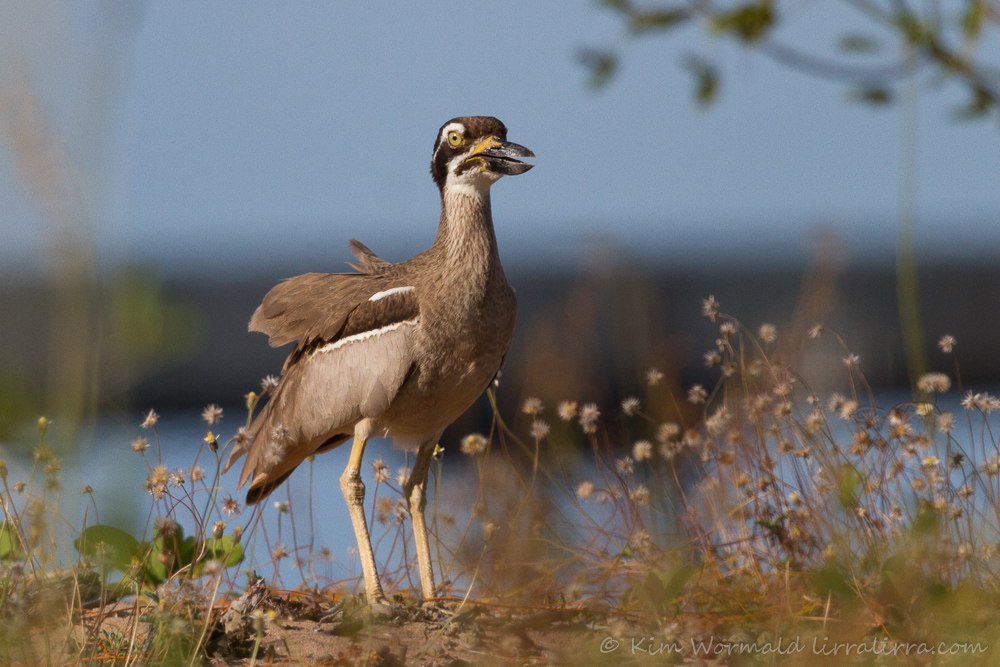
Oh how I love lying on the ground, watching birds go about their business!

This beaut parrot species flies between Tasmania and Victoria each year. I believe I briefly saw them at the WTP but this shot was taken of a bird that is part of the captive breeding program at Healesville Sanctuary.

Gang-gangs used to feed in my garden when I lived a few minutes from where I live now. I’m greatly saddened that their numbers have declined so rapidly.
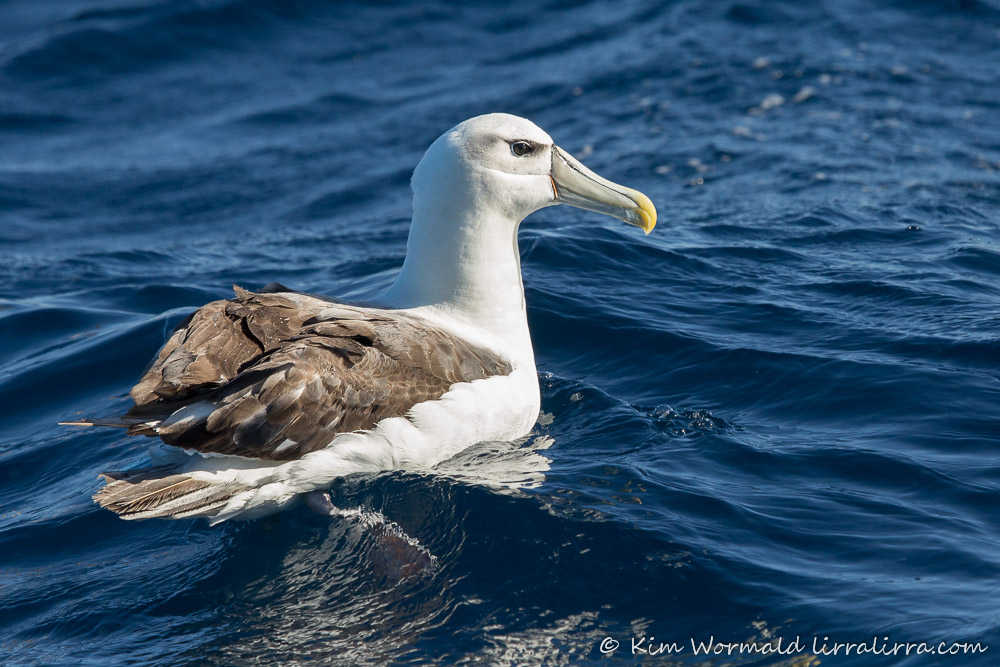
It was an indescribable honour to watch albatross.
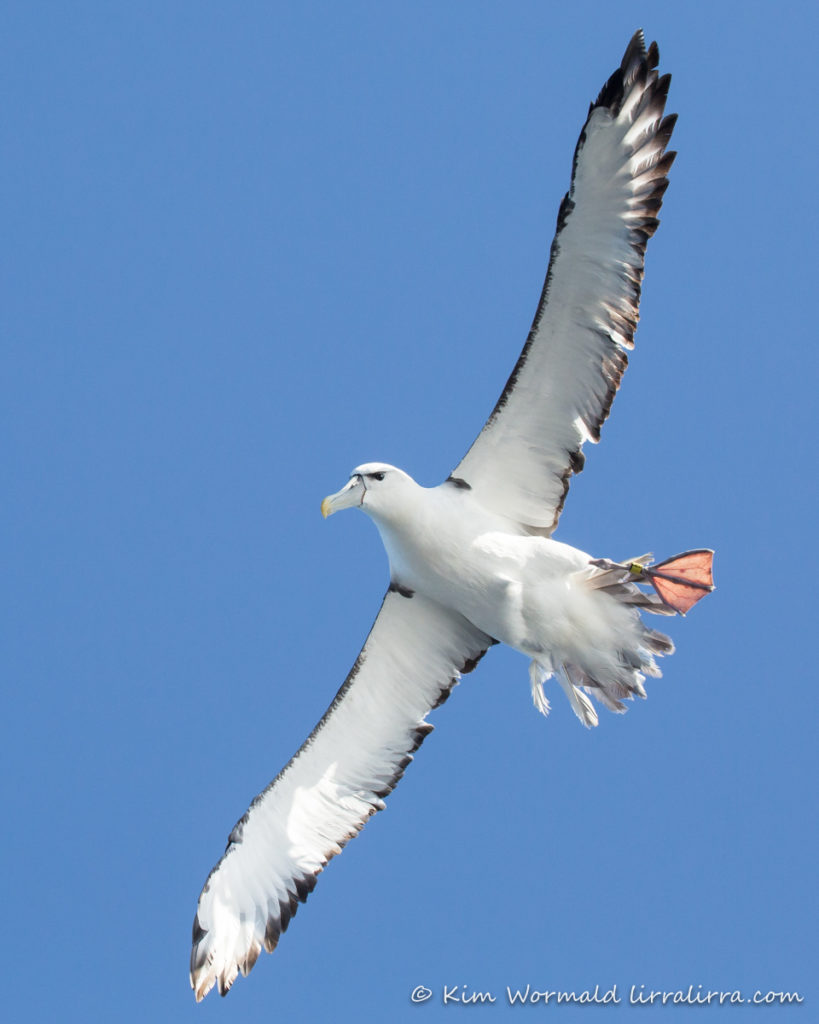
The ABBBS band on this Shy Albatross was readable – which was exciting for me and even more exciting for the team who had banded it ten years previously. I wrote about this fascinating bird in an earlier post: Missing in Action for Ten Years

I have no idea why these birds are called Black-necked Storks when their necks are so beautifully coloured.
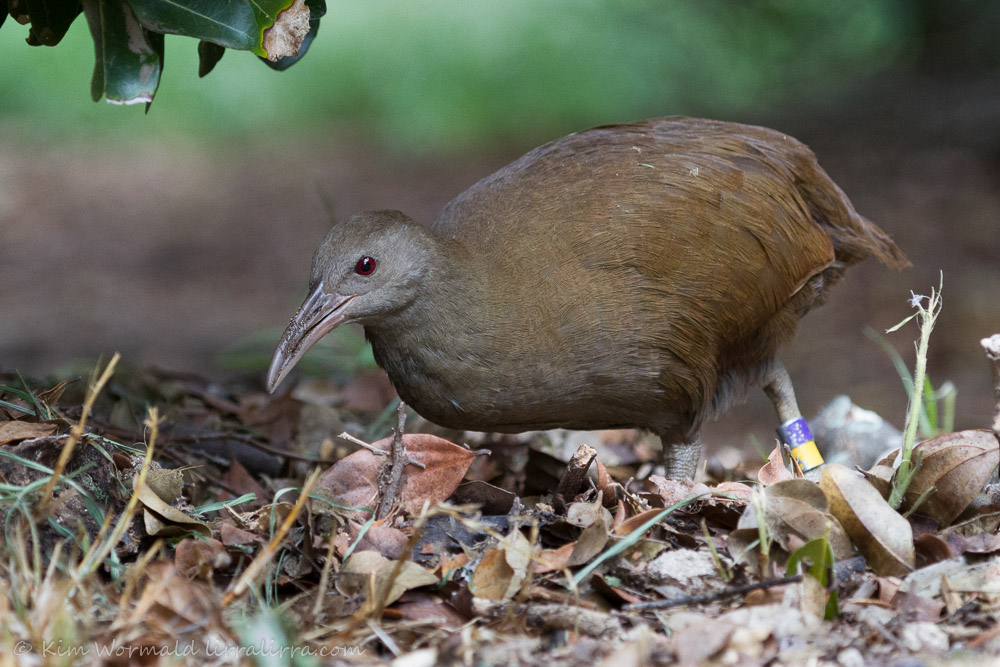
This species has made a remarkable resurgence thanks to some brilliant work on Lord Howe Island.
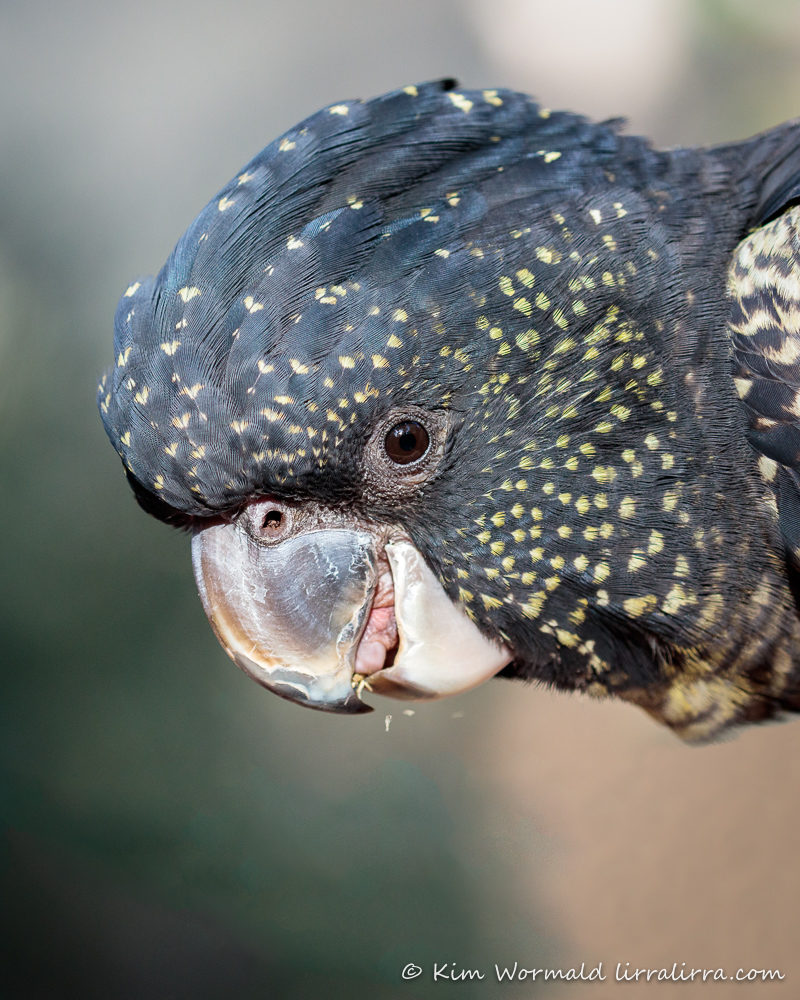
Several species of black-cockatoo are in trouble. They are sensational species.
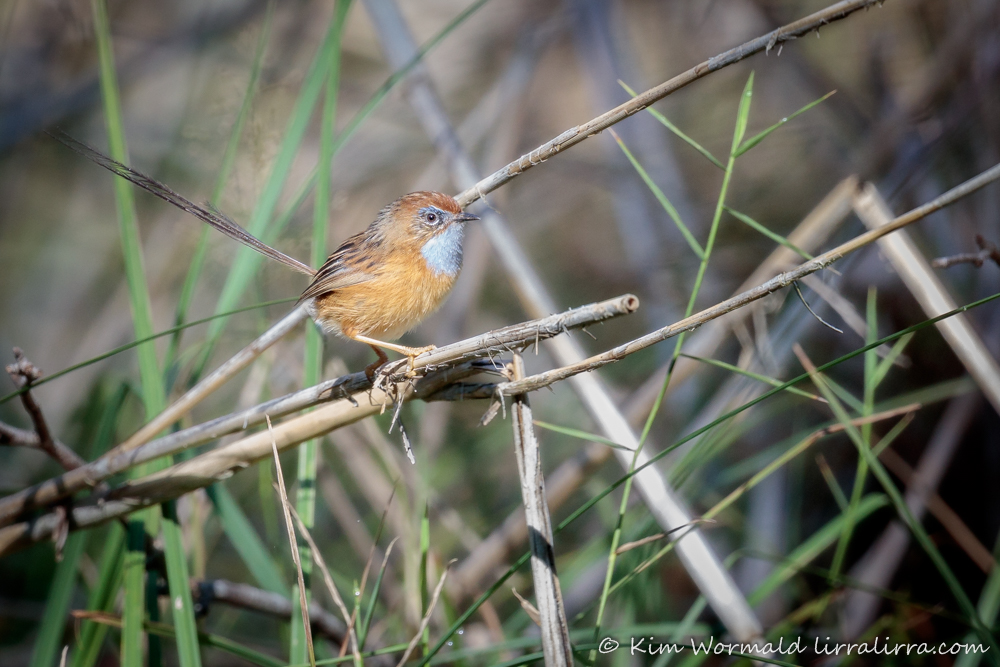
I was in the bush one day when I mentioned to my friend that what I’d really love to see was a Southern Emu-wren… within seconds this little beauty turned up. Neither of us could believe our eyes.
I thought this post would have maybe half a dozen photographs, I’m pretty staggered to see how many endangered species I have photographed. There are other shots I could have added which I haven’t processed yet, or which are horribly blurred.
But the point of this New Year post is to suggest that we all aim to do at least one thing this year to help endangered birdlife. It could be something as simple as buying something from the Friends of the Helmeted Honeyeater online shop, or maybe making a donation to one of many worthy causes, or volunteering, or planting habitat… the list goes on and on. Please let me know if you have other ideas or links you’d like to share.
Oh, I’ve added my podcast video with Thomas Doerig from Birding today to the Ethics/podcast link above – I hope it works that way, please let me know if you have trouble with it. I’m rapt to see that over 400 viewers on the YouTube link alone have been interested in ethical bird photography.
I hope there are no glaring errors in this post. I thought it would be short and sweet as I’m feeling crook and was aiming for an early night. I’ve done three negative RATs so presumably it’s nothing too nasty.
Wishing you and our birds a wonderful 2023, happy birding, Kim
~ Prints and gifts Lirralirra Shop
~ Facebook page Kim Wormald – lirralirra
~ Facebook group Ethical Bird Photography

Hi Kim,
I hope you’re feeling better soon. Thank you for your beautiful photos which you post without fail every week. Thanks also for championing our native birds and bringing their wonder to people through your photos and words. A simple thing like planting native plants in the garden and providing birdbaths with plenty of fresh water is a great start to helping our beautiful birds.
Best wishes, Liz
You are so right about plants and water Liz. Even when I’ve been feeling pretty pathetic I’ve managed to top up the birdbaths and that makes me and the birds happy. As I’ve been answering comments this morning there’s been a flurry of birds come to bath and drink, including fairywrens, an Eastern Yellow Robin, two fledgling Eastern Spinebills, a scrubwren, quite a few thornbills, a couple of New Hollands and Yellow-faceds. Earlier on were the fantails, magpies, Silvereyes, Crimson Rosellas and a Golden Whistler. It’s surprising that I get any work done when I spend so much time looking through the window.
Any help for our endangered birds is absolutely vital and the fight to save and protect our feathered friends will go on and on. So my suggestion is to engage our children and grandchildren. Donate on behalf of the children to groups working to protect many of the endangered birds shown in this post. Buy a camera and organise family birding trips even in the garden and local parks. Take the children on a field trip and enjoy a day with Landcare or local bird group. Speak to a teacher at the local school and request a ‘bird day’, inviting someone like you Kim to speak and run a workshop for the children – maybe create a video or take lots of photos and the children set up their bird exhibit showcasing the birds in their local area and raising money for a bird group. Local council usually would be interested in providing some funding to pay for workshop and exhibit (especially organised by children – great photo op!!) or approach local MP and get that person involved.
Nature needs the next and next generations to continue the wonderful work of dedicated and committed conservationists.
Kim we know you are always busy but an exhibition of your magnificent photos and all the excellent information about the birds and photography would definitely not only showcase your talents but, most importantly, highlight the importance of fighting to protect all our feathered friends and, in particular, those endangered and facing extinction.
Knowledge (and beautiful photos) is power.
As you know, best way to get better is to be amongst nature. So find a cosy spot, warm blanket, cup of tea and just relax and enjoy what you will see outside your window.
“Nature itself is the best physician.” Hippocrates
You have come up with some brilliant ideas Barbara. You’ve really made me think. As an ex primary school teacher I am passionate about education and have run some toddler birding walks in local parks, which are always wonderful. You’ve also made me wonder about doing another exhibition. Although my photographs have been exhibited in many countries I’ve only had one big exhibition myself, that I shared with two local photographers. It was amazing, and an amazing amount of work. Doing another with an emphasis on the ethics behind my images could be really interesting, thank you
Dear Kim
I shall add my warmest wishes and speedy return to good health as others have already done. Angus and I back from a shortish holiday in Brisbane where at the Wynnum Mangrove boardwalk, we espied a beautiful Azure Kingfisher and heard the delightful “running downstairs” call of the Mangrove Gerygone.
We are very happy to be back in Tassie and shall be out into the bush to hear and see our feathered friends soon.
Warm regards
Alison
Your AK and MG holiday sounds truly wonderful Alison, and extra special that you have such beautiful bushland to get home to. Thanks so much for your kind wishes, Kim
Dear Kim,
I’m alarmed and so sorry to hear you are feeling crook. Wishing you well asap! Please please be gentle with yourself and take good care and rest! I’ve read that the rat tests don’t always work – so perhaps a pcr may be worthwhile? Thank you once again for your magnificent work – it’s a living legacy of how special your superb efforts are to spread the word about ethical birding and the vitally needed conservagtion efforts for all our wildlife. These pics are such a poignant reminder of how we all need to do more to take care of our magnificent and endangered species. Much gratitude to you Kim for all you do. Speedy recovery!!
Hi Denise, I think you’re right about a PCR but I didn’t even think of it, it’s hard to think straight when you’re feeling unwell. But apart from all the other symptoms I haven’t been feverish so I’m guessing it’s some other virus… whatever it is I’ll be glad when I have my usual energy back, there’s always so much to do (that shouldn’t include sitting around literally watching the grass grow!) Thanks heaps for all your kind comments, it’s such a team effort to promote ethical birding and conservation, Kim
I am so very sorry that you are under the weather, and hope that you pick up soon. Very soon.
Sadly the numbers of birds (and indeed of all creatures other than ourselves) continues to grow. And grow. I do what I can, and mourn. And hope.
I had wanted it to be a positive post, it wasn’t until I read your comment that I realised it could be taken in the opposite way. That’s what happens I guess when I’m not thinking straight. So sorry
Hi Kim,
So sorry to hear that you’re not feeling well. Hope it’s short-lived and that you’ll be out and about doing what you love doing soon.
Love all your photos. I don’t understand why the Black-necked Stork is called that, either. Why not Australian Jabiru seeing as the Jabiru is from somewhere else? Black-necked Stork as you say does not fit seeing as it’s not black.
Anyway, my dear friend, a speedy recovery and take care. xx
Oh I do quite like the sound of Australian Jabiru. Or maybe the powers that be could find an indigenous name for them. I have a very old book of traditional words and phrases which lists koororook and monti as words for stork. Thanks for you kind wishes Marg, much appreciated xo